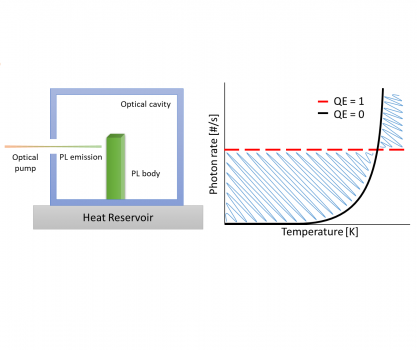The beauty of Planck’s law, describing thermal radiation, lies in its generality. Knowing the emissivity and temperature uniquely defines the spectral radiance. On the other hand, nonthermal emission, such as photoluminescence, is a fundamental light–matter quantum interaction that is associated with the chemical potential and is not bound by Planck’s law. In this work, we study the upper limit for non-thermal emission. The study supports recent experiments on photoluminescence at high temperatures, which may result in a reduction of photon emission with increased temperature. We also present the maximal possible rate for any emission, and the inherent dependency between quantum efficiency (QE) and emissivity, which leads to a universal point defined by the pump rate and the temperature where the emitted rate is shared by any material, independent of the QE. This generalization sets an upper limit for any luminescence, which can be useful in lighting and energy conversion systems.
We solve detailed balance rate-equation model that includes both radiative and nonradiative, stimulated and spontaneous interactions. The model describe for the first time experimental observations and predicts many new observables.

a) A typical temperature-dependent PL and thermal photon rates. b) Ne3+ emission spectrum for various temperatures. c) Theoretical simulation showing similar temperature dependent rate.

